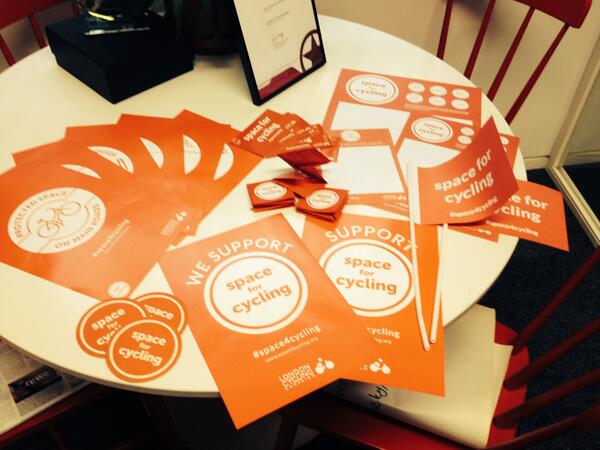Northern Soul recently published its charter for safer cycling in the North of England called Cycle for Change. Gary Dawes from space4cycling writes about a national initiative aiming to “create the conditions where anyone can cycle anywhere”.
Space4cycling is a coordinated national campaign led by national cycling organisations like the CTC, and coordinated and fought for at a local level by campaign groups in cities across the North.
Why do we need space4cycling? What’s wrong with the roads?
We need space4cycling because the majority of people perceive cycling on the roads among traffic as dangerous and scary. It can be although it is usually a lot safer than people realise. But all the training, high visibility aids and sensors in the world do not protect against an inattentive or distracted driver.
This is not a UK phenomenon, but is true the world over. In countries without much in the way of infrastructure, cycling levels are generally very low.
However, countries and cities which have made provision for people to ride cycles safely away from vehicles (such as the Netherlands and Denmark) record cycling levels of up to 50 per cent.
Cities in the USA which have made space for cycling such as New York and Washington have seen the levels of people riding bikes soar. These places have also seen congestion and journey times for vehicles fall significantly as a result of people choosing to cycle rather than drive.
Space4cycling isn’t about – and doesn’t just benefit – the people cycling today. In fact, it’s not for them at all. It’s for the children who would like to ride to school. It’s for everyone that would ride if they felt it was safe. It would benefit the ones who don’t cycle, and road congestion and pollution would be reduced.
What is space4cycling then?
The aim of space4cycling is to make it possible for anyone, regardless of age or ability, to cycle anywhere safely. It has six main goals:
- Protected space on main roads. These are through roads which are usually busy and fast, and across junctions which currently can make people on bikes very vulnerable. Priority needs to be given to the cyclepaths over side roads and junctions matching the major parallel route, as well as making cycling as convenient as driving.
- Removal of through traffic from residential roads. Residential roads are often used as rat-runs to avoid jams. Blocking them off to through traffic makes them more attractive to residents as better places to live. Space4cycling ensures that these roads are kept open for people on foot or cycling. This is also known as filtered permeability.
- Lower speed limits. 20 mph needs to be the limit in residential and local areas, and reduces risk and injuries for pedestrian and cyclists alike with very little impact on journey times.
- Cycle routes though green spaces. Parks and other green spaces can be wonderful places to cycle, and are often used to join routes up away from roads. Many councils allow cycling in green spaces, but don’t provide good space, and some prohibit cycling in green spaces completely.
- Safe routes to schools. Every schoolchild should have the right and chance to walk or cycle safely to school, yet all too often these routes are unsuitable and choked with cars on the school run.
- Safe routes and cycle friendly shopping centres. Signed, direct and safe routes for people to cycle to town and city centres, and other amenities. Provision of plentiful, convenient and secure cycle parking at the amenities. This makes shopping areas less choked by cars, and more liveable and pleasant places to shop, and studies have shown it boosts local economies.
Much of the above is already being done by some local authorities, although in a very slow and piecemeal fashion. Areas are being turned into 20 mph zones, but often without any traffic calming measures, or stopping up of through routes. Where roads are stopped up, often this is without any consideration to allow cycles to filter through.
By Gary Dawes, space4cycling
 Gary is not a cyclist, driver or a pedestrian, he’s just a person getting from A to B by the most suitable transport for the journey.
Gary is not a cyclist, driver or a pedestrian, he’s just a person getting from A to B by the most suitable transport for the journey.
For more than 30 years this has most often been a bicycle. As an experienced cyclist, Gary has toured extensively across the UK and beyond. These days it’s usually the daily 17-mile cycle commute to work, but also to get the shopping in and to visit family and friends
Gary is a firm believer that cycling is the answer to many of the UK’s transport and health issues and is a keen advocate for all things two-wheeled or human-powered. Replacing cars with bikes would transform our towns and cities for the better, and make people healthier and happier.
More Info: Space4cycling website or on twitter: @space4cycling
Jon Snow from Channel 4 news supports space4cycling and has made a video explaining the campaign. You can watch it here:












